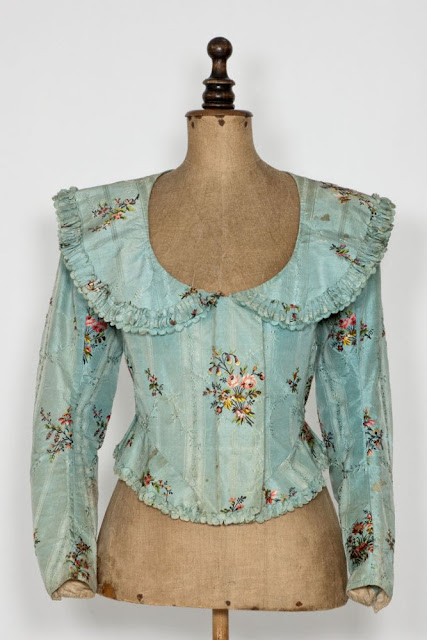First and foremost, we would like to encourage you to simply give it a go - have fun with it, make that garment you love, find a garment you love, get yourself something you will love wearing. This post - fair warning, it is quite long - tries to compile further guidelines and advice if you want to up your game and do your best.
Sometimes, the idea of doing that may seem just like a very unrealistic dream: for example, I love this c. 1790 silk jacket from Severočeské muzeum in Liberec to bits, but I have not yet come across a good modern version of those late rococo silk brocades with scattered flower bouquets.
With this inspiration post, I would like to guide you towards finding a realistic and perfectly doable version of that dream. You may have to start small, but small steps can eventually lead to a full historical outfit.
Right up front, I’d better clarify what exactly we mean by “extant historical garment” and “as close as possible”.
We certainly don’t insist you actually find a historical garment to physically hold and study and copy exactly. What we want you to do is what many of you already do – find a picture, preferably more pictures, of a garment in a museum collection or on a trusted auction site, and make a garment for yourself (or a family member / friend) that looks as close as possible to it.
(If you’re lucky enough to have physical access to your chosen item, or have an heirloom / personal collection item from the HSM time range you can recreate, that’s a plus but by no means a requirement.)
“As close as possible” is definitely, at least to a certain extent, up to you and your circumstances, just like the historical accuracy of your HSM entries is to a certain extent up to you. If you have not yet, read Leimomi’s post on the various ways of approaching historical accuracy – that alone may help clear some things up.
1790s silk taffetta jacket, Abiti Antichi.
I love this one equally as much, and solid-coloured silks are easier to find. (Although I actually have other plans for this challenge, the comparison serves as a good example.)
What we would like to see with this challenge in particular, however, is a greater attention to the pattern shapes, techniques and details that make a historical garment historical – try to really recreate the construction, the seamlines and trimmings, and get inspired by garments genuinely worn in the period rather than prints and paintings (although those may also offer you insights the extants alone cannot).


